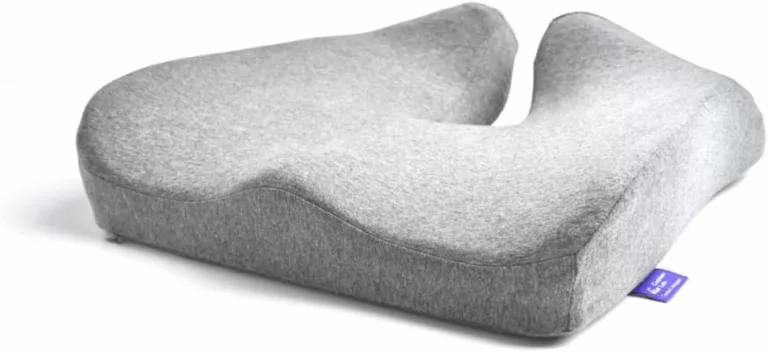Introduction
Carpal Tunnel Syndrome (CTS) is a common condition that affects millions of people worldwide, causing pain, numbness, and tingling in the hands and wrists. One effective way to alleviate CTS discomfort is by using an ergonomic mouse. These specially designed mice provide features and functionalities that promote natural hand and wrist positions, reduce strain, and improve overall comfort. In this comprehensive guide, we will explore the key ergonomic mouse features that can help relieve Carpal Tunnel Syndrome discomfort. Additionally, we will provide product recommendations from Amazon to assist you in finding the perfect ergonomic mouse for your needs.
Understanding Carpal Tunnel Syndrome
Carpal Tunnel Syndrome (CTS) is a debilitating condition that occurs when the median nerve, which runs from the forearm into the hand, becomes compressed or squeezed as it passes through the carpal tunnel—a narrow passageway in the wrist. The primary cause of CTS is repetitive hand and wrist movements, such as typing, using a computer mouse, or performing manual tasks that strain the wrist. Other factors that contribute to the development of CTS include underlying health conditions like arthritis, diabetes, or hormonal imbalances, as well as pregnancy and obesity.
The symptoms of Carpal Tunnel Syndrome can range from mild to severe, and they often develop gradually over time. Initially, individuals may experience occasional numbness or tingling in the thumb, index, and middle fingers. As the condition progresses, the symptoms can intensify and include persistent numbness, pain, or a burning sensation that radiates from the wrist up to the arm. Weakness in the hand and a decreased ability to grip objects may also be present.
It’s crucial to address Carpal Tunnel Syndrome symptoms promptly to prevent further progression and discomfort. Seeking medical advice from a healthcare professional is highly recommended, as they can diagnose CTS through a physical examination and, if necessary, conduct nerve conduction tests or imaging studies to confirm the diagnosis. Early intervention is vital in managing CTS, as untreated or improperly managed cases can lead to long-term nerve damage and permanent loss of hand function.
In addition to medical intervention, ergonomic modifications play a significant role in managing Carpal Tunnel Syndrome. Ergonomics is the science of designing and arranging the workplace environment to optimize human well-being and productivity. By implementing ergonomic principles, individuals can reduce the strain on their hands and wrists, minimizing the risk of developing or worsening CTS symptoms.
Proper ergonomics include maintaining a neutral wrist position while performing tasks, using ergonomic tools and equipment, and practicing regular breaks and stretching exercises. Among these, using an ergonomic mouse is particularly effective in reducing CTS discomfort. These mice are specifically designed to promote natural hand and wrist positions, minimize repetitive movements, and distribute pressure evenly across the wrist and fingers.
By investing in an ergonomic mouse and incorporating ergonomic practices into daily routines, individuals with Carpal Tunnel Syndrome can significantly alleviate their discomfort and improve their overall well-being. Now, let’s explore the key features of ergonomic mice that can aid in relieving Carpal Tunnel Syndrome symptoms and enhance comfort during computer use.
Ergonomic Mouse Design Principles
- Hand and Wrist Alignment: Explain how ergonomic mice are designed to promote a neutral hand and wrist alignment, reducing strain on the median nerve.
- Contoured Shapes: Discuss the benefits of ergonomic mice with contoured shapes that provide natural finger and palm positioning.
- Button Placement: Explain the significance of conveniently positioned buttons that minimize excessive finger movements and strain.
- Adjustable DPI Settings: Highlight the importance of adjustable DPI (dots per inch) settings that allow users to customize cursor speed and sensitivity.
- Scroll Wheel and Side Buttons: Discuss how well-designed scroll wheels and side buttons contribute to reducing hand movements and improving productivity.
- Material and Texture: Explain the significance of ergonomic mice made from high-quality materials with non-slip textures that offer a comfortable grip.
Features to Relieve Carpal Tunnel Syndrome Discomfort
- Vertical Ergonomic Design: Discuss the benefits of vertical mice that position the hand in a handshake position, reducing wrist pronation and pressure on the median nerve. Recommend specific vertical ergonomic mice available on Amazon.
- Trackball Mice: Explain how trackball mice eliminate the need for excessive wrist movements, promoting a more relaxed and comfortable hand posture. Provide recommendations for trackball mice suitable for CTS sufferers.
- Wrist Rests and Palm Supports: Discuss the importance of ergonomic mice with integrated wrist rests or detachable palm supports that provide additional cushioning and support for the wrists. Recommend specific mice with these features.
- Programmable Buttons: Highlight the advantages of ergonomic mice with programmable buttons, allowing users to customize shortcuts and reduce repetitive movements. Recommend programmable mice that can alleviate CTS discomfort.
- Wireless and Bluetooth Connectivity: Discuss the benefits of wireless and Bluetooth-enabled mice that eliminate cable clutter and allow for greater freedom of movement. Recommend reliable wireless mice options.
- DPI Adjustability: Explain how ergonomic mice with adjustable DPI settings allow users to find the cursor speed that suits their comfort level and reduces strain on the wrists. Recommend mice with easy DPI adjustment functionality.
Additional Tips for Carpal Tunnel Syndrome Relief
- Ergonomic Workstation Setup: Provide tips on setting up an ergonomic workstation, including proper desk height, chair positioning, and keyboard placement.
- Stretching and Exercise: Suggest specific hand and wrist stretches that can alleviate CTS symptoms and improve flexibility.
- Regular Breaks and Micro-Movements: Emphasize the importance of taking regular breaks and incorporating micro-movements into daily routines to prevent prolonged static postures.
- Ergonomic Keyboard Considerations: Briefly discuss the significance of using an ergonomic keyboard in conjunction with an ergonomic mouse to maximize comfort and reduce CTS symptoms.
Conclusion
Choosing the right ergonomic mouse with features specifically designed to relieve Carpal Tunnel Syndrome discomfort can make a significant difference in managing the condition and improving overall comfort. By understanding the principles of ergonomic mouse design and the features that aid in CTS relief, you can make an informed decision when selecting the perfect ergonomic mouse for your needs. Remember to prioritize your comfort, consider the specific demands of your work environment, and consult with a healthcare professional if needed. Invest in your long-term well-being and make the switch to an ergonomic mouse today.




